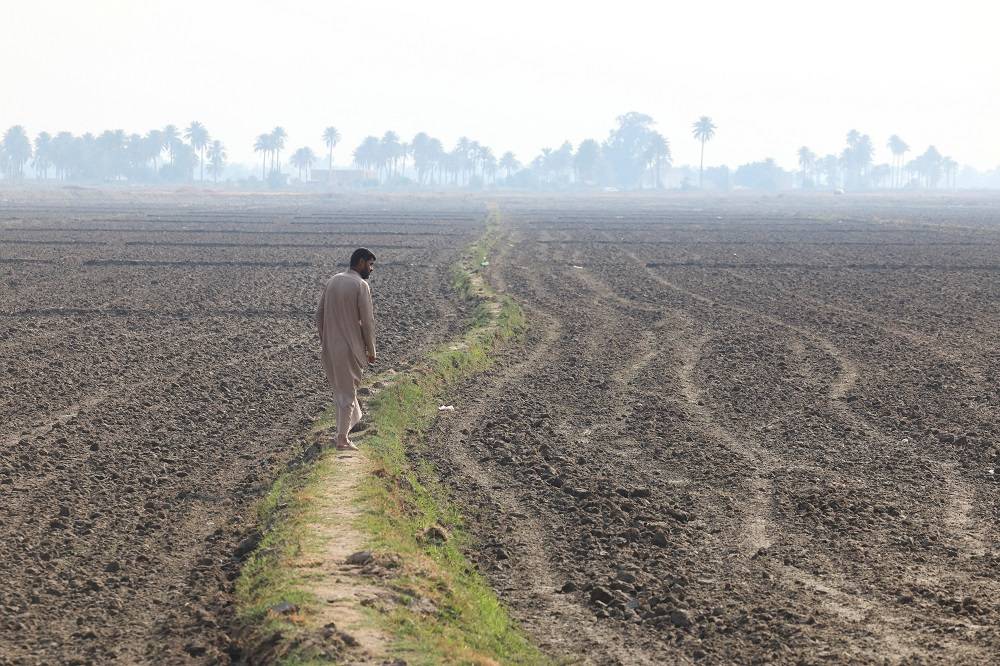Amid the devastation, thousands of residents of Syria’s Al-Qusayr performed Eid Al-Fitr prayers in the northern district square—the site where the city’s first protest against President Bashar al-Assad’s rule erupted in 2011.
For the first time in Al-Qusayr’s history, Eid prayers were held in a public square. It was also the first mass gathering of residents in an open space in 13 years, following a war that destroyed 70% of the city, displaced its people, and led to its capture by Lebanon’s Hezbollah and Syrian regime forces.
Al-Qusayr, a region located near the Lebanese border, was once Hezbollah’s most significant stronghold in Syria. The group withdrew after the fall of the Syrian regime in December, but its loyalists and affiliated locals remained, along with residents of several border villages that have seen sporadic clashes in recent months.
The most intense fighting occurred in February, when Syrian forces launched a military operation that pushed them into Lebanese territory and deployed troops to seal off illegal border crossings.
Tensions flared again two weeks ago after Syrian soldiers were killed in the border region, triggering an exchange of artillery fire between the two sides.
The clashes left casualties on both ends and forced the displacement of border village residents before a ceasefire was reached with the Lebanese army.
The agreement included the closure of four illegal crossings in an effort to curb the smuggling of weapons and drugs, a trade that has flourished over the past decade under the former regime.
As soon as the regime fell, refugees from Al-Qusayr living in Lebanese camps began returning to their hometown. Hundreds arrived to find their homes completely destroyed, forcing them to set up tents beside the ruins while they rebuilt or searched for alternative housing.

The large turnout for Eid prayers underscored the scale of the return.
Journalist Ahmed al-Qasir, who recently came back, estimated that about 65% of those displaced have now returned. Before the uprising, Al-Qusayr had a population of around 150,000, he told Asharq Al-Awsat.
Shahin, 30, who returned in 2018, described the city as a wasteland at the time, despite some 20,000 people having already come back.
“Hezbollah, regime militias, and smugglers controlled the area. There were no real markets, just small shops. Everything was in ruins—schools, clinics, hospitals,” he said.
Residents had to travel 30 kilometers to Homs for basic necessities, enduring regime checkpoints that extorted money along the way.
With the fall of Assad’s regime and Hezbollah’s withdrawal, life in Al-Qusayr has slowly begun to return to normal. Since the start of Ramadan, markets have reopened despite widespread destruction, poverty, and hardship.
On the eve of Eid, the city’s streets buzzed with late-night shopping, Shahin noted.
“Al-Qusayr is finally regaining its role as the region’s commercial hub,” he said.
According to a survey by the Sami Volunteer Team, more than 30,000 refugees returned to Al-Qusayr and its countryside within the first month of the regime’s collapse.
That number is believed to have doubled over the past four months, and team organizers expect it to rise further once the school year ends.
Zaid Harba, a member of the 40-person volunteer group, said most returnees came from refugee camps in Lebanon, while fewer arrived from displacement camps in northern Syria.
Many families there are waiting for the academic year to conclude before arranging their return.










